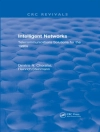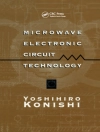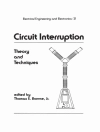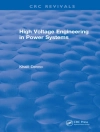This book contains selected papers presented during technical and plenary sessions at the World Renewable Energy Congress, the world’s premier conference on renewable energy and sustainable development. All papers were rigorously peer reviewed.The Congress, held at Murdoch University in Perth, Western Australia from February 5 -9, 2017, with the theme of “Transition Towards 100% Renewable Energy”, featured keynote speakers and parallel technical sessions highlighting technical, policy, and investment progress towards achieving 100% renewable energy ranging in scale from households to cities to large regions, with a focus on the challenges and opportunities transforming the global energy systems. The book highlights contributions from thought leaders involved in the supply, distribution, consumption, and development of sustainable energy sources.
Jadual kandungan
Chapter 1.To Import Coal or Invest in Renewables? A Real Options Approach to Energy Investments in the Philippines.- Chapter 2.Rethinking of Geothermal Power Develoment in East Asia: Economic Opportunities and Technical Barriers.- Chapter 3.Experimental study of tubular light pipe system: influence of light reflector on its performance.- Chapter 4.Techno-economic and environmental implications of electricity generation from solar updraft chimney power plant in Meekathara in Western Australia.- Chapter 5.Do as I say; don’t do as I do, let alone do as I’ve done. A study of Australian Universities’ collective response to climate science.- Chapter 6.Using Superheated Steam Dryer for Cogeneration System Improvement and Water Recovery.- Chapter 7.Relevance and Applicability of Standards in Wind Farm Collector Circuit Design Process and Balance of Plant Selection.- Chapter 8.Scaling up Miscibility Gap Alloy Thermal Storage Materials.- Chapter 9.Validated CFD Simulations of EWH Energy Storage Based on Tank Orientation.- Chapter 10.Why EVs? A comparison of alternative fuels to help Australia regain energy security.- Chapter 11.The impact of Energy Security and Environment concerns on the fuel mix for light passenger vehicles in Australia during the near future – Findings from a 2015 Murdoch University Survey.- Chapter 12.Classification of Solar Domestic Hot Water Systems.- Chapter 13.Temperature Difference with Respect to Exposure Time for Black Paint and Galena Powder-Black Paint Composite Selective Surfaces.- Chapter 14.On-track, but off-target: New Zealand’s 90% renewable electricity target and district council planning.- Chapter 15.Exploring the Death Spiral:A system dynamics model of the electricity network in Western Australia.- Chapter 16.Efficient Seasonal Time of Use Feed-in tariff for Residential Rooftop Solar Panels in Australian Electricity Market.- Chapter 17.Synthesis of Zn O Hexagonal Prisms on Aluminum substrates by the Spray Pyrolysis Technique.- Chapter 18.Performance Evaluation of a Vertical Axis Wind Turbine Using Real-time Measuring Wind Data.- Chapter 19.SIREN – SEN’s Interactive Renewable Energy Network tool.- Chapter 20.Characterization and Alkaline Pretreatment Lignocellulose of Cabomba caroliniana and Its Role to Secure Sustainable Biofuel Production.- Chapter 21.Competitiveness of Utility Scale Wind Farm Development with Feed-In Tariff in Indonesia.- Chapter 22.Biogas Production from Modified Starch at the Anaerobic Digester.- Chapter 23.Context and community renewable energy development in Western Australia: towards effective policy and practice.- Chapter 24.Harvesting Sunshine with Smart Solar Panels and Cryptocurrencies.- Chapter 25.Development of tools for comparative study of solar cookers with heat storage.- Chapter 26.Development of Energy Service Company (ESCO) Market to Promote Energy Efficiency Programs in Developing Countries.- Chapter 27.The Development of a Performance Indicator for PV power generators.- Chapter 28.Performance of Solar Thermal Organic Rankine Cycle (STORC) power plant with a parabolic trough system.- Chapter 29.Solar short-term forecasts for predictive control of battery storage capacities in remote PV diesel networks.- Chapter 30.Criteria for Sustainable Operation of Off-grid Renewable Energy Services.- Chapter 31.Energy and material constraints in India’s economic growth.- Chapter 32.Magnetic for Monitoring Prospect of Dieng Geothermal Area.- Chapter 33.Sustainability Analysis of Net Zero Emission Smart Renewable Hybrid System Solution in Bangladesh Rural Context.- Chapter 34.New Highly Thermally Conductive Thermal Storage Media.- Chapter 35.Electricity Demand and Implications of Electric Vehicle and Battery Storage Adoption.- Chapter 36.Electricity Demand and Implications of Electric Vehicle and Battery Storage Adoption.- Chapter 37.Study on an Economic Feasibility of Wind-Diesel Hybrid System.- Chapter 38.Prospects of Renewable Energy Development Within Remote or Rural Area in Indonesia.- Chapter 39.Present Status and Target of Japanese Wind Power generation.- Chapter 40.Levelised Cost of Solar Thermal System for Process Heating Applications in the Tropics.- Chapter 41.Selection of adsorbents for double effect adsorption refrigeration cycle combined compressor.- Chapter 42.Optimal organizational forms for local renewable energy projects.- Chapter 43.Sustainable supply chain: Feedstock logistics issues of palm oil biomass industry in Malaysia.- Chapter 44.Volume segmentation in a stratified vertical EWH tank using steady-state element cycles for energy balance.- Chapter 45.Modular Pico-Hydro Power System for Remote Himalayan Villages.- Chapter 46.Impacts of Distributed Generators on the Protection System of Distribution Networks.- Chapter 47.Rapid Decarbonisation of Australian Housing in Warm Temperate Climatic Regions for 2050.- Chapter 48.Miscibility Gap Alloys – A New Thermal Energy Storage Solution.
Mengenai Pengarang
Dr. Ali Sayigh is Chairman and Founder of the World Renewable Energy Congress and Council; Director General of World Renewable Energy Network (WREN); Chairman and Founder of the Arab Solar Energy Society; and Past Chairman of the UK Solar Energy Society. Dr. Sayigh was recently elected to chair the Iraqi Energy Institute, and he actively consults on renewable and sustainable energy issues for a number of international organizations, including UNESCO, ISESCO, UNDP, ESCWA, & UNIDO. Dr. Sayigh was Director of Solar Seminars at ICTP Trieste, Italy from 1977-1995; Professor of Solar Energy at King Saud, Kuwait, and Reading Universities from 1969 to 1994, and Professor of Engineering at the University of Hertfordshire from 1994 to 2004. He was the founding expert in Renewable Energy at AOPEC. He is Fellow of the Institute of Energy; Fellow of the Institution of Electrical Engineers; and Chartered Engineer. He has published more than 400 papers and has contributed to and edited more than 30 books. He has been Editor and Editor in Chief of several international journals including Renewable Energy and the International Journal of Environmental Sciences and Technology and Editor-in-Chief of the Major Reference Work, Comprehensive Renewable Energy.












